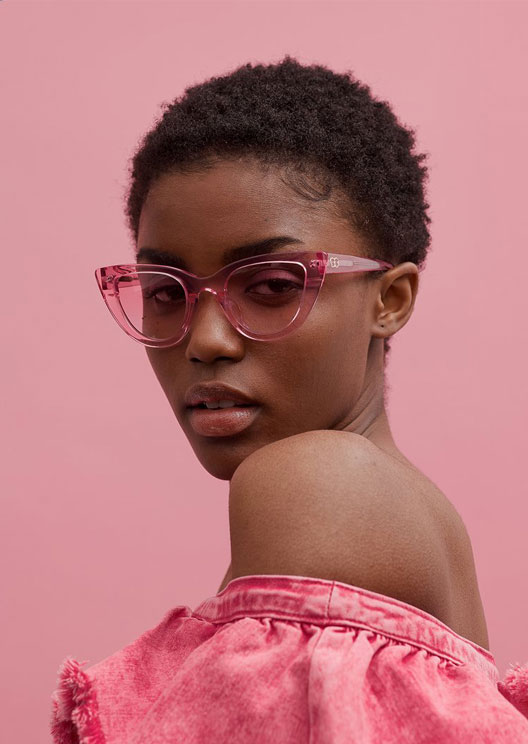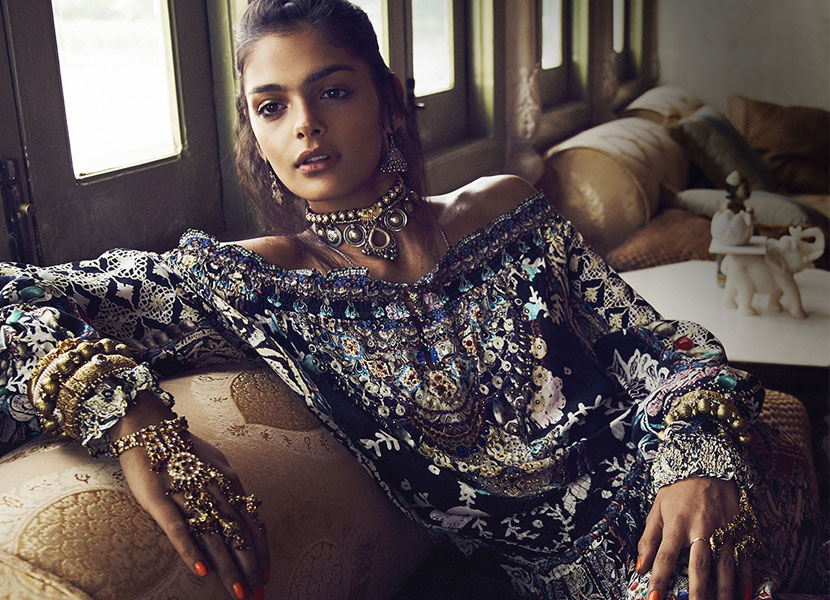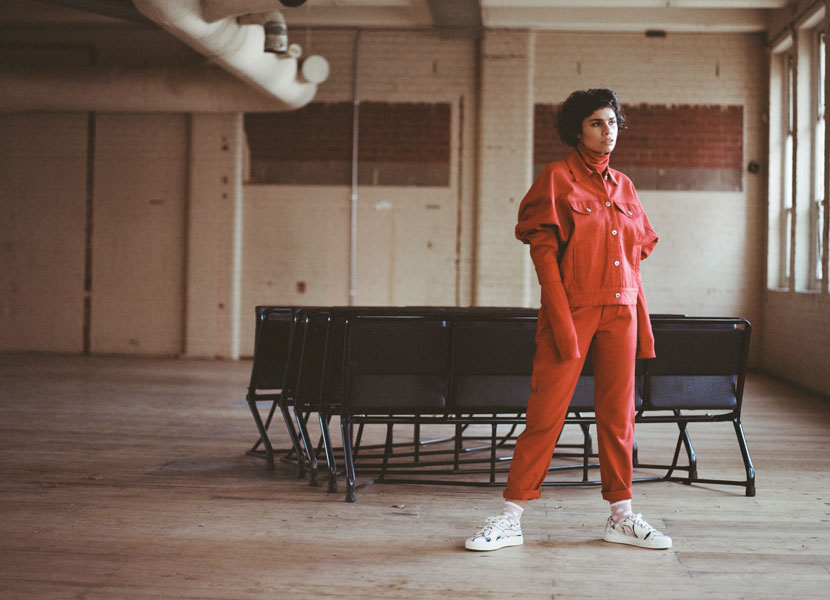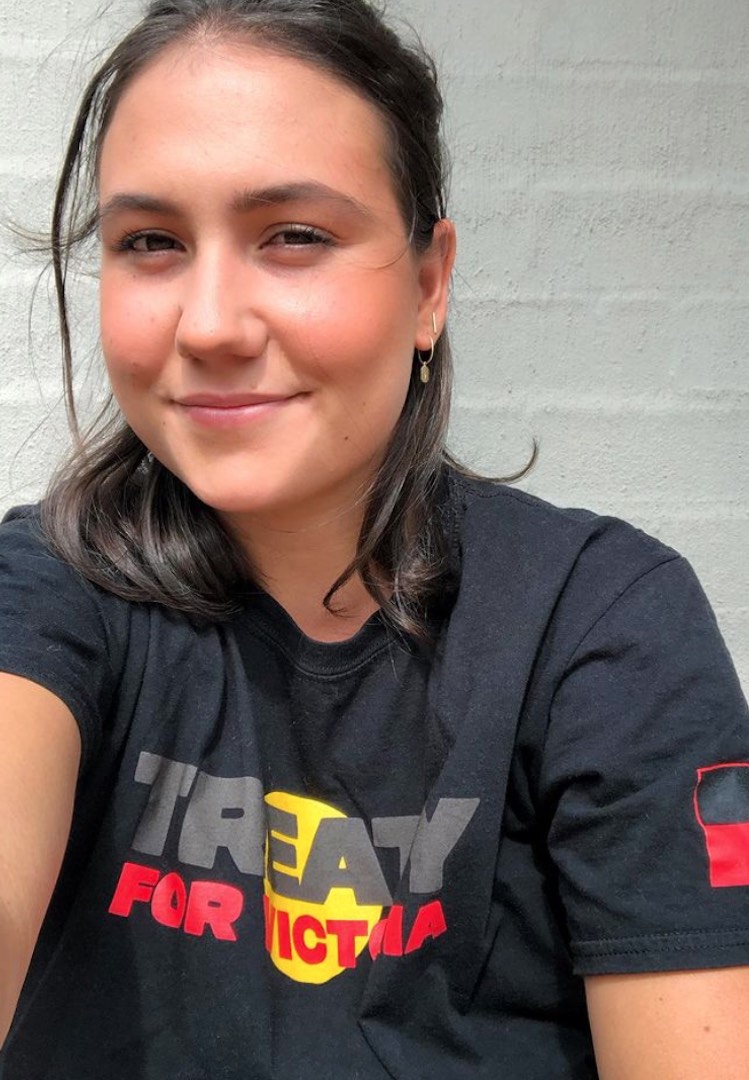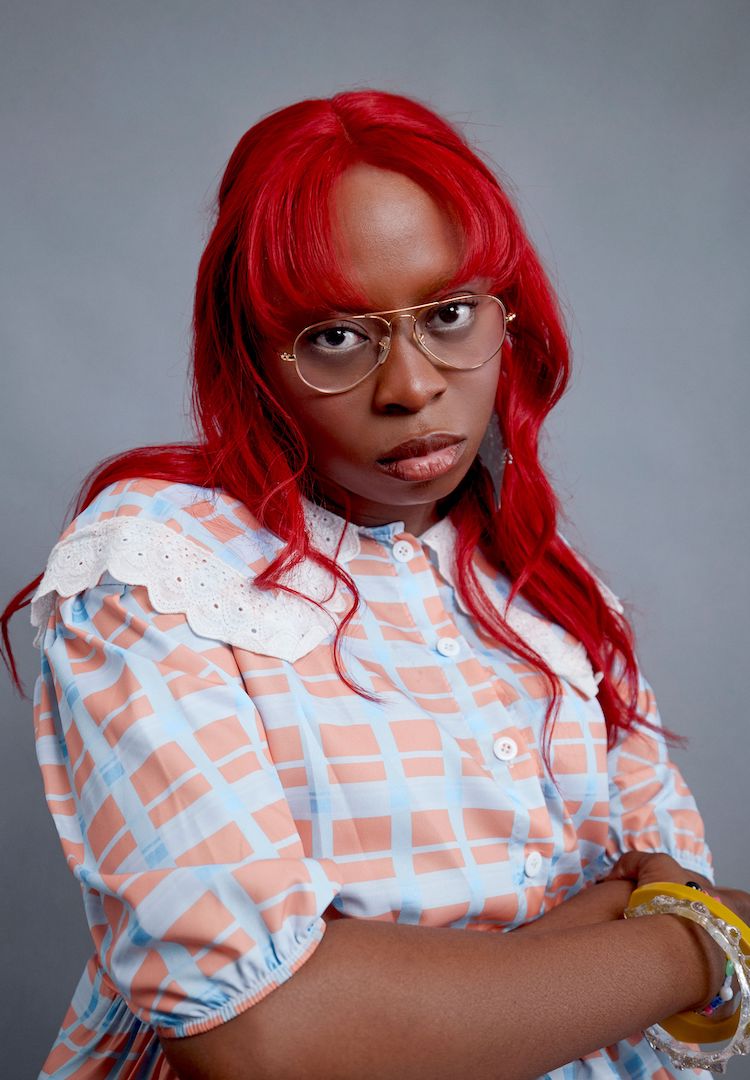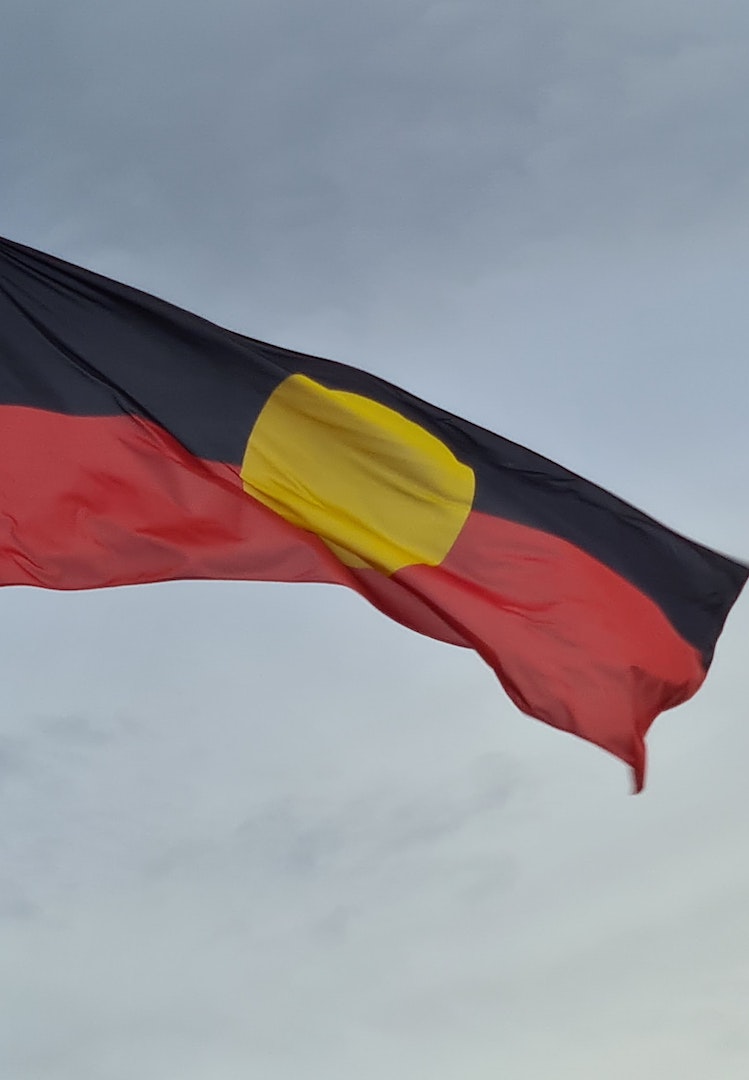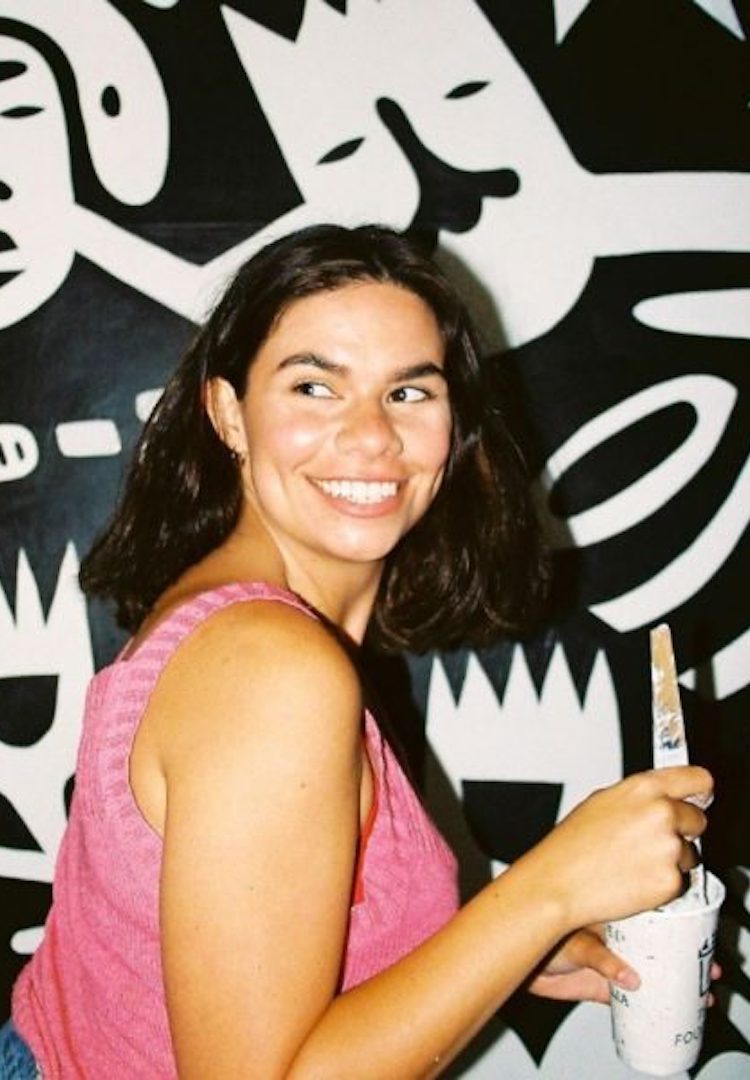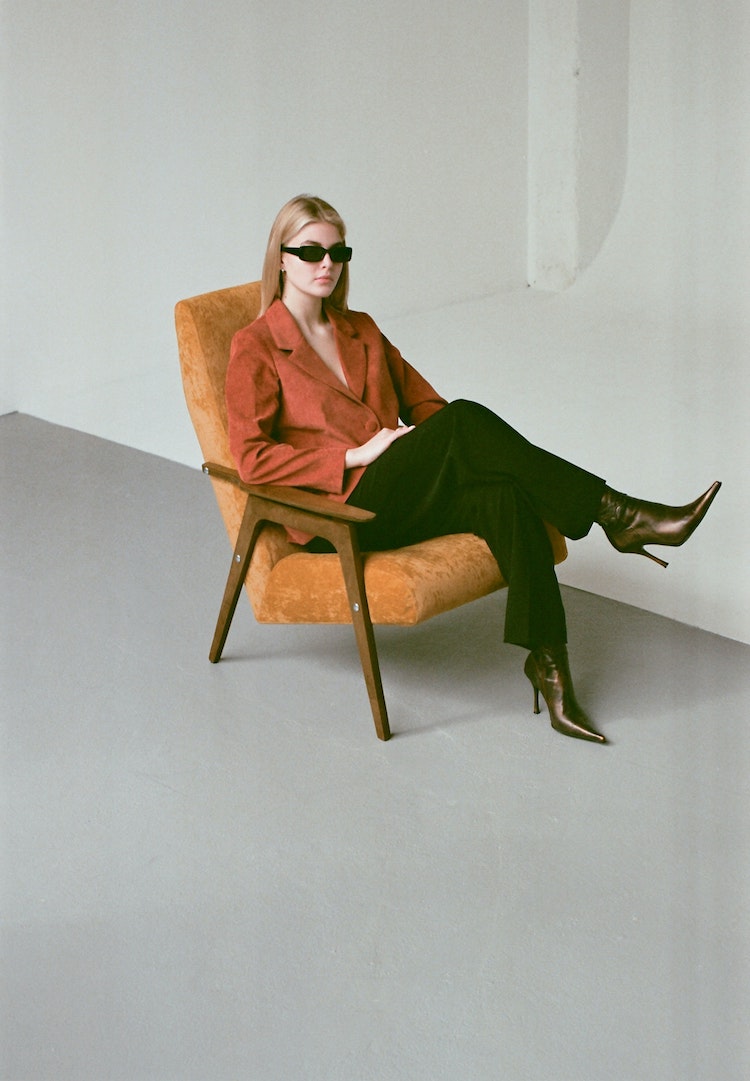Indigenous activist Aretha Brown on changing the date, the education system and women who inspire her
PHOTOGRAPHER – JORDAN DRYSDALE
STYLIST – JADE LEUNG AT VIVIEN’S CREATIVE
HAIR AND MAKEUP – GEORGIA GAILLARD
No fear.
Aretha Brown is a 17-year-old student, activist and sometimes-model. She’s showing Australians that young Indigenous people have a voice. And it’s one that needs to be heard.
Aretha first gained public attention when she delivered a powerful speech at Melbourne’s Invasion Day rally in 2017. “Too long have Aboriginal people been talked about, rather than talked to,” she told the 50,000-strong crowd. Unsurprisingly, it’s Aretha’s mission to advocate for Aboriginal youth and educate the community about Indigenous affairs. We caught up with Aretha to chat about activism, changing the date, and her role in the National Indigenous Youth Parliament.
What issues are most important to you as a young Indigenous person?
Probably the role that education plays. Obviously I’m still going through the school system and what is so intrinsically annoying for me, is not being taught my history, on my own my land. I never, ever learn about it at school. I grew up in a small town in New South Wales called Nambucca Heads, where there was a large Aboriginal community. So we actually had so many more of these kinds of classes.
And then moving to Melbourne, I go to a school which is predominantly white. That’s not an insult, it’s just a fact. And to be honest, these are the people that probably need to know about Indigenous history a little more than Aboriginal people.
Tell us a little about your upbringing.
I was actually born in Melbourne, but grew up in New South Wales. I came back to Melbourne to finish school because the high school up there, while they did offer some amazing programs for
Aboriginal kids, the rest of the curriculum was… it’s kind of like the opposite. Great for Aboriginal kids, but not so good for the other academic stuff. And moving to Melbourne did nothing for me culturally, but educationally, the curriculum is good. I think the biggest difference is language.
Up there, my tribe is Gumbaynggirr, and we have our own language. In Australia we have 250 plus tribes, and there’s also 400 plus languages. And the languages are so distinct and unique to the ones next to them. Growing up, my uncle actually ran the language class in Nambucca Heads, and it was the one class where there was 100 per cent attendance. You can learn about maths, and it’s okay. And you can learn about science, but the one class that all the Aboriginal kids came to was language, because it was ‘us’. Uncle is running it, it’s about us, it’s about our tribe and so it was so wonderful to have that kind of perspective. But moving to Melbourne, I had to drop that and I had to pick up Indonesian.
In terms of the school curriculum, how do you think we can work towards incorporating more Indigenous education?
I think it’s a bigger question of how do we get people to care about an issue they don’t see they have any connection with? Part of the solution is trying to find connections between people. Realising that we’re not this entity that lives in the Northern Territory – we’re also living in Melbourne, in the city.
There’s one idea of what an Aboriginal person is, and what an Aboriginal person looks like. You are only given the representation of what a stereotypical Aboriginal person looks like. So someone like me who is light skinned and is half, you know, half-cast – sometimes people don’t see that. It’s difficult.
What does being an activist mean to you?
Speaking without fear or having to justify my own lived experiences. And as an ally, realising when you’re speaking about someone, and no longer for them.
What do you think is the single most important issue facing Indigenous people right now?
That our stories aren’t held to the same degree as anyone else’s. Because when you teach an Indigenous person they are worthless, it means you don’t have to contribute anything to their community… ever.
How do you work to educate people about Aboriginal culture?
I don’t feel like I’ve done enough to say I’ve been pushing for change, but I try and speak out as much as possible and I try and start discussions. And that’s where it all begins at the end of the day. You don’t necessarily have to start a charity, or do something amazing. It just starts with literally questioning how you see things. Going, “hey, maybe this isn’t the right way to do something.”
I also work really closely with this organisation called AIME. They’re the coolest guys and work to provide Indigenous students with tutoring and free mentoring. I’m super in debt and grateful for that mob – most of which are young fellas who run and organise it all. It’s super inspirational. As an Indigenous person, statistics show that I’m more likely to go to juvie than to finish high school. When you think about it, it’s fucked.
What’s the reaction been like to your most recent Invasion Day speech?
I got a lot of wonderful responses, but I don’t know… there was so much tension at that time of year. Just little things. Like, I was wearing an Aboriginal flag T-shirt in the lead up to the event, and I had people yell at me on the street. I had one guy come up to me and he said some horrible things.
But it wasn’t so much people that had individual gos at me. Because that I can handle, and honestly there wasn’t that much [negativity] which is amazing. It was mainly good stuff, but the stuff that really hurt was the media’s portrayal of it. I won’t mention which media outlet, but one wrote an article about me, and oh it was so horrible. They managed to turn the whole day into something that it wasn’t. So not only did they make the protests seem violent and angry, but they devalued all the work that I’ve ever done by titling the article: ‘Aretha Brown Aboriginal Model and Invasion Day Activist.’ And I was like, two things.
Number one, I love modelling and I love the fashion world, but it’s never ever been my title. So, not only did they kind of shape me into something to make me seem like an idiot, but also with the use of the phrase, ‘Invasion Day Activist,’ they managed to cipher all the work that I’ve done into a single day.
How would you like to see January 26 commemorated in the future? Do you want the date changed?
I think the date should be changed, honestly. For those people who are a little unclear about it, in the Aboriginal community there are three kind of ideas.
Number one is we keep the day, but we change its meaning. Which is fair enough, it’s kind of the more mild version.
There’s the one which is right bang in the middle, which is what I believe in. It’s that we change the date to another day.
And then there’s the third option, which is we abolish the day altogether. We don’t celebrate it. Which is quite radical.
What do you say to people who believe we shouldn’t change the date?
I heard this great analogy the other day…I can’t remember where the quote was from, I’m sorry. It was from this person saying, “you know, you would never hold a party the day after your housemate or relative died. You wouldn’t do it. It would be weird, wouldn’t it?”
It would be bad manners, it’s a respect thing. I’m not gonna push it down anyone’s throat, because I think that’s the wrong way to do it. But I think it’s this thing where people are gonna have to realise, ‘hey you know, this is kind of shit.’
I think either way [Australia Day] should be celebrated, because if you think about it, who loves Australia more than anyone? It’s gonna be the mob here, and so I think it’s not us going against the system we have now, it’s just kind of saying, ‘We need to take a step back and kind of think about why we’re celebrating it and who for.’ But for every person that doesn’t quite get the significance of the day, there’s also those that get it and understand.
What needs to happen for the Australian government to help build trust within your community?
Well, the only way that I would know how is to have more Aboriginal people involved in government. I think that you can only talk about a group of people for so long, where you are literally just talking about them and you don’t actually understand their experiences. You have to come from the same background. You have to have the underlying ties with someone in order to understand and have empathy. To be able to have passion for change, really.
Tell us about your involvement with the National Indigenous Youth Parliament.
The National Indigenous Youth Parliament is an annual event where they get mob from all over Australia. I think it’s 50 representatives from Torres Strait and Australia. We actually make speeches at Old Parliament House. We talk to politicians, we pass around bills, and those bills actually get passed on to parliament. I actually got elected first female Prime Minister of the National Indigenous Youth Parliament.
What’s been your biggest achievement to-date?
Probably being first woman Prime Minister in the National Indigenous Youth Parliament. I think that’s amazing. It was peer-voted among all the representatives of each state and territory. It’s so cool if you think about it. It was so awesome.
Which women are you most inspired by?
The most inspiring women in my life include: my grandma (Aboriginal Elder Aunty Janice Brown) who is a dedicated member of her community in the western suburbs of Sydney, Maya Angelou who taught me to be kind, Nina Simone who taught me not to take shit, my first girlfriend who taught me to love, and the cleaning lady Maria at school who taught me what hard work really looks like.
If there was one thing you could see change in your lifetime, what would it be?
I would love to see Aboriginal history taught as a subject within itself. I would love that more than anything, and I would also love to see more kids just pass high school. You know what? No, fuck that. Just more kids feeling like they’re having a good schooling experience. Passing… what does that mean? Fuck ATAR. It represents such a little part of who you are. I take back what I said. It’s not about passing, not about ATAR, but about Aboriginal kids feeling like their school experiences were worthwhile.
instagram.com/enterthedragon__
This article was originally published in Fashion Journal 177. You can read it here and view the full photo shoot here.

